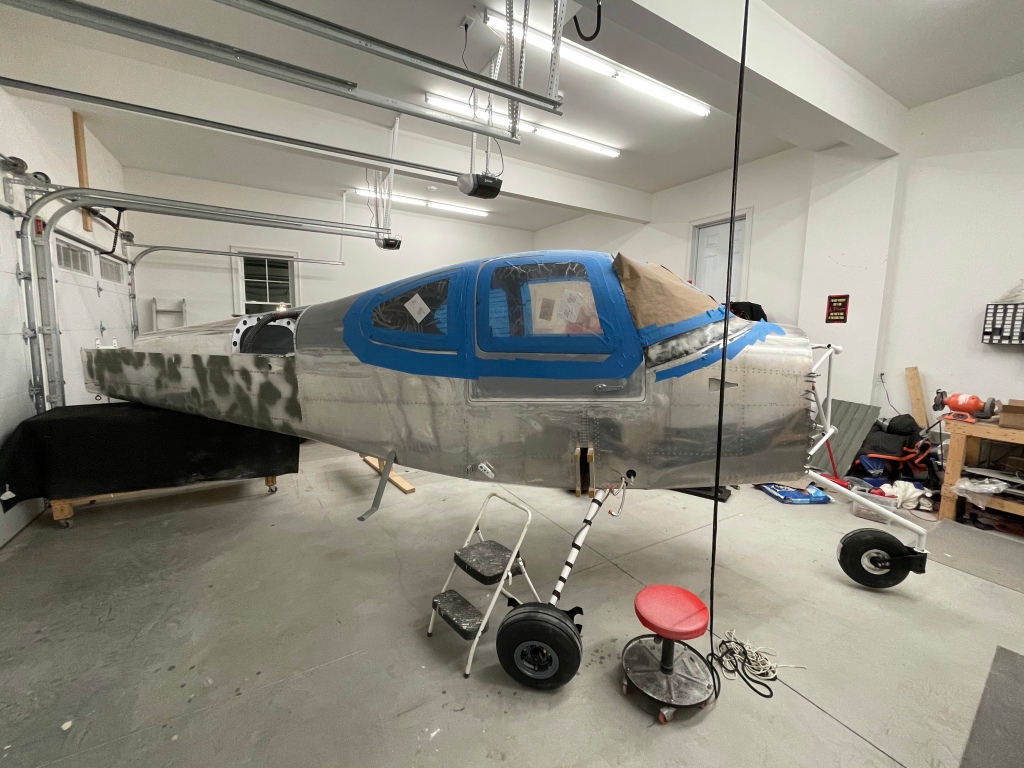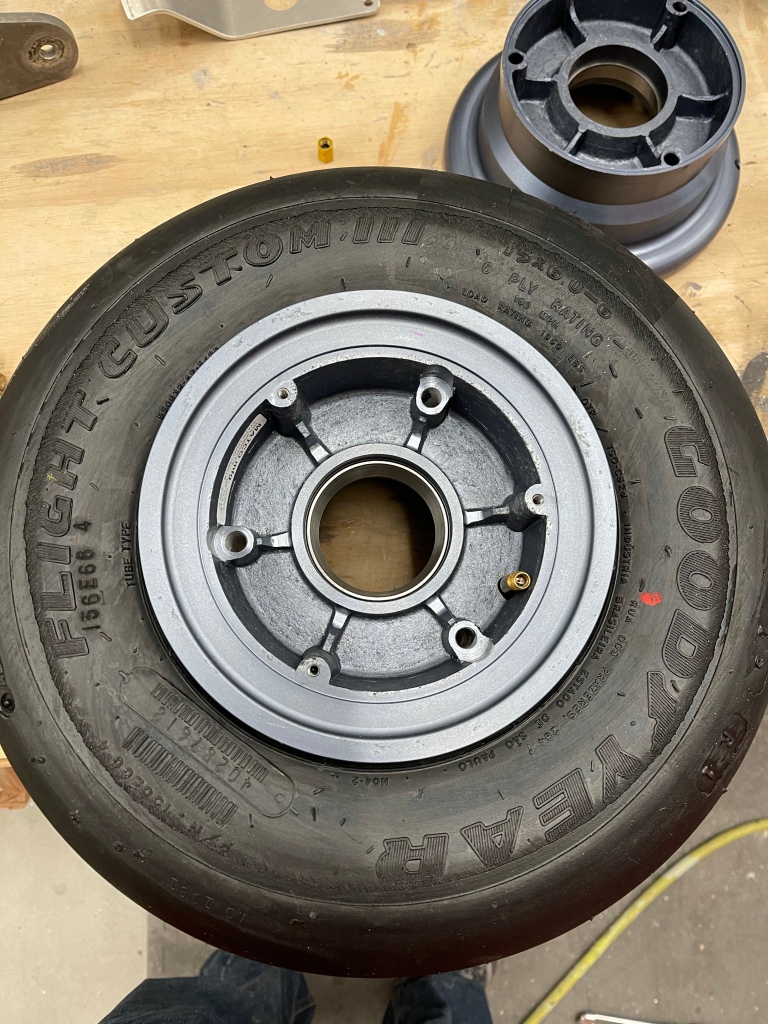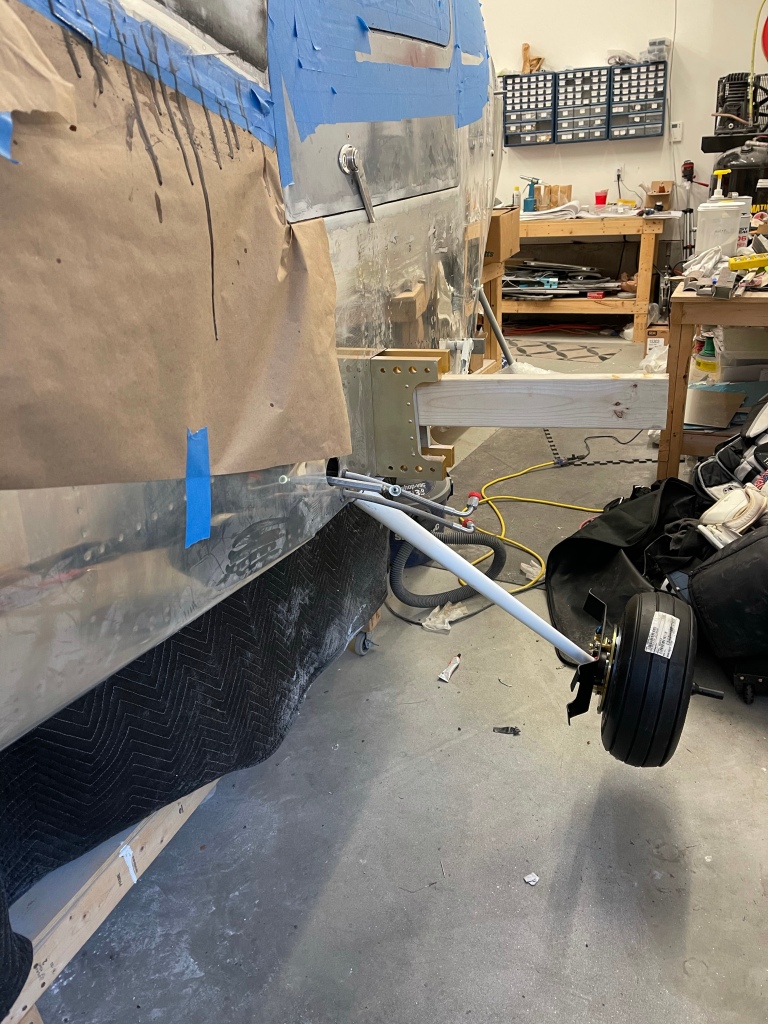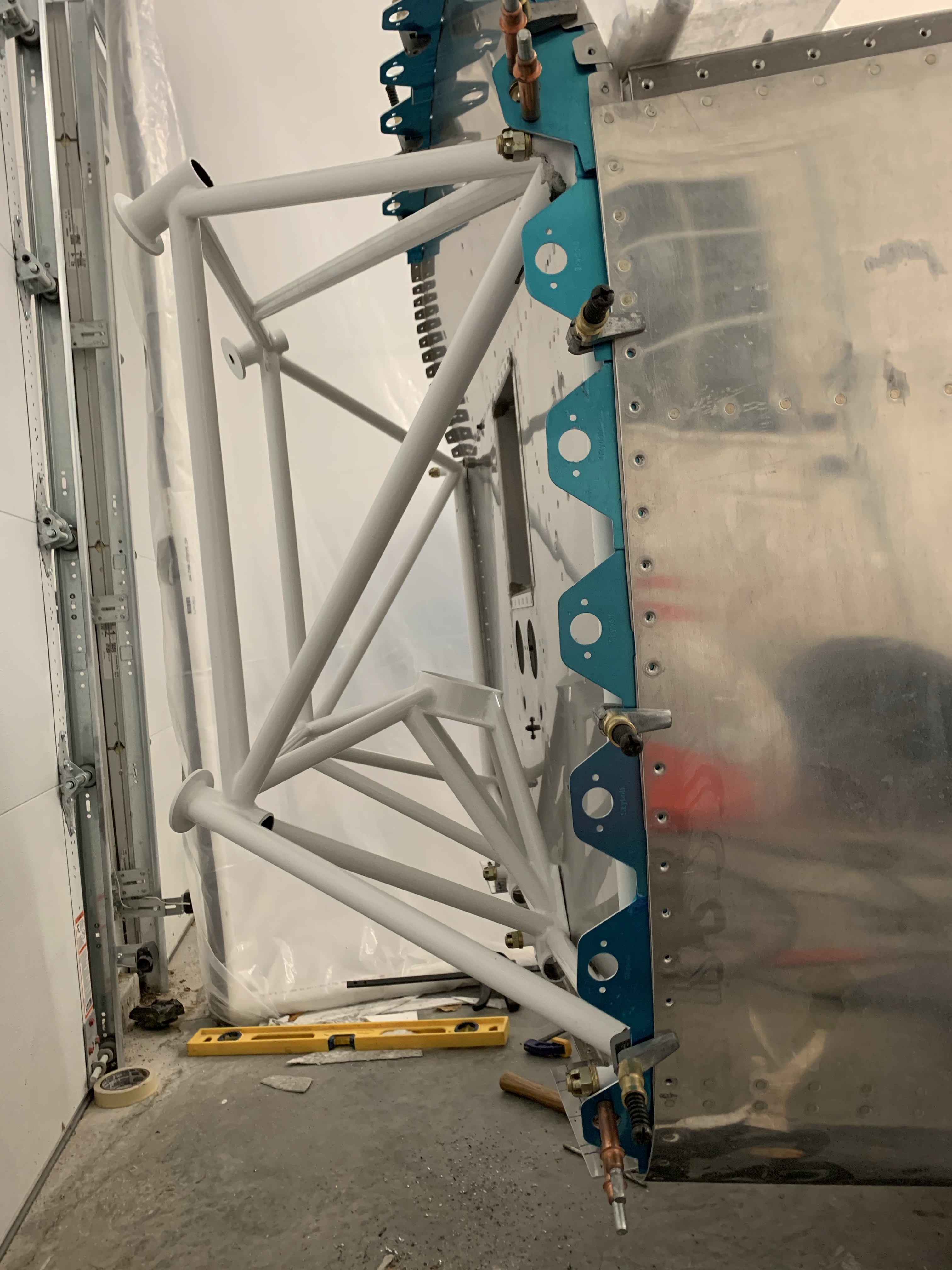Couple of small things to finalize about the gear installation prior to moving on to getting the interior panels trimmed.
First was to tackle the hardest bolt in the airplane to install. The bolt that holds down the nose gear donuts. This thing requires a lot of compression to even get the bolt hole to line up. Luckily, I have a tractor. So I strapped the engine mount to my bucket and let the hydraulics do the work. Even still, the bolt was stubborn. I feel for others who have said they’ve had family members hanging off the engine mount while someone pushed the tail upwards while trying to muscle that bolt in place.


I then got the plane repositioned in my garage. It’s now kiddie cornered across 2 stalls so I have room for the engine to be mounted and still move around it.

I also got the brake lines installed and taped to the gear legs.


While I’m waiting for my engine to arrive, I’m knocking off misc items still to do on my list.
I started getting the interior side panels trimmed to be able to paint them. I started with the rear panels as they don’t require too much trimming. I did have some adjustments to do as I did build up the door areas a little more than stock, but the trimming wasn’t too bad.


There are 4-5 screws that need to be located and nut plates added to hold the panels in place.
Then it was time to tackle the front panels. These require a bit more trimming, especially around the front door frame where I built things out a bit more with micro.

One trick I saw used was to use a compass scribe a line matching the contour of the area around the door frame. Trimming to that line, gives a good fit. This marking and trimming around the frame was done progressively until everything fit well. Taking a little off at a time is key here.

I then placed the instrument panel in place to make additional trims around the air vent area until it all fit well.

This process was repeated for the right side. I do have AC hoses routed down the right side, so I additionally had to trim the front of the panel to alleviate interference as the hoses leave the firewall and start their journey down the right side. I can now paint these when I have some time..













































